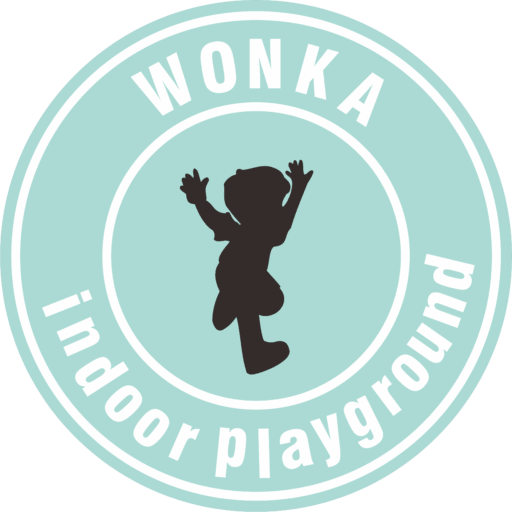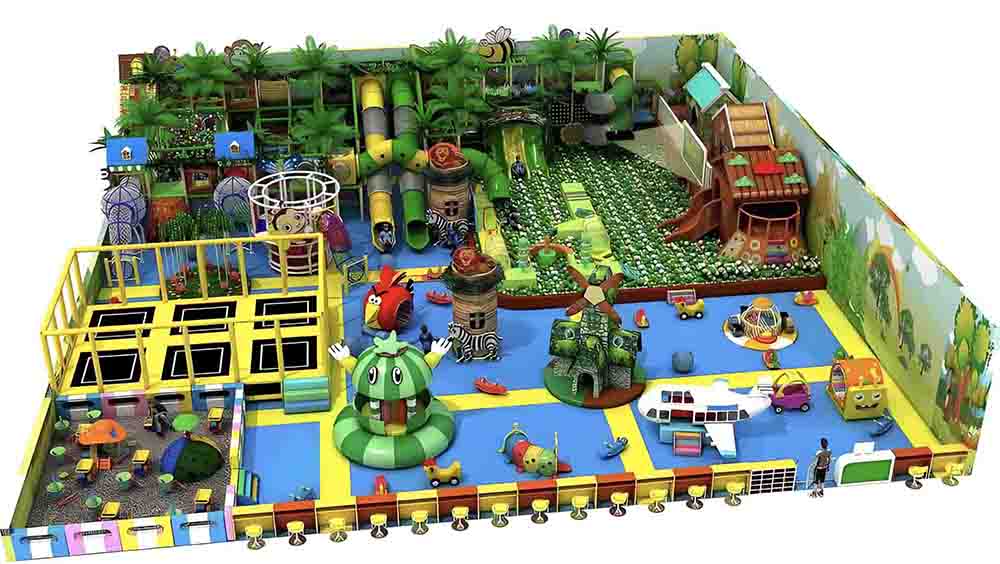Opening an indoor playground is not just about play—it’s a capital-intensive, location-sensitive business that requires strategic financial planning. In 2025, with rising real estate costs, increased safety standards, and shifting consumer behavior, it’s more important than ever to understand the true costs and expected ROI before launching.
This expert guide offers a comprehensive breakdown of the real investment required to launch an indoor playground, using verified pricing data from manufacturers and real-world business cases across Asia, Europe, and the Middle East.
1. Why Budget Accuracy Is Critical in 2025
Indoor playgrounds are front-loaded investments. You’ll need to spend on design, equipment, renovation, rental deposits, staffing, and marketing—before your doors open to the first customer.
Inaccurate budgeting can lead to:
- Cash flow gaps during buildout
- Underinvestment in play capacity
- Delayed openings
- Overruns in rent or renovation
- Longer break-even periods
A detailed cost breakdown is not optional—it’s your first business tool.
2. Playground Equipment Costs (Latest Pricing in 2025)
Indoor playground structures are priced per square meter. Based on 2025 supplier data (especially from China, where most global soft play equipment is manufactured):
- Standard 2-level structure: $100–$130/m²
- Custom-themed or multi-level: $140–$210/m²
This price usually includes:
- Steel frame and climbing systems
- Slides, tunnels, bridges, and rope structures
- Foam-padded flooring (EVA mats)
- Ball pits, obstacle zones, and interactive walls
- Soft barriers and safety padding
Important: Installation and international shipping are sometimes not included in quotes. Clarify this with the supplier during negotiation.
3. Sample Equipment Budgets by Playground Size
To give you a clear benchmark:
- Small site (150 m²): $120 × 150 = $18,000
- Medium site (350 m²): $125 × 350 = $43,750
- Large site (800 m²): $135 × 800 = $108,000
These estimates include standard 2-layer structures with slides, climbing nets, tunnels, and activity panels. Fully custom themes, mascots, and interactive tech (e.g. projection games) will increase the cost by 15–40%.
4. Renovation and Interior Fit-Out Costs
While indoor playgrounds don’t need luxury decoration, basic interior preparation is essential for functionality and safety.
Key renovation items:
- Electrical rewiring and safety circuits
- LED lighting installation
- Painting or wall cladding
- Reception zone construction
- Washroom fitting (if not provided)
- HVAC improvements
- Safety signage and exits
Estimated Renovation Costs:
- Small site: $3,000–$7,000
- Medium site: $8,000–$15,000
- Large site: $18,000–$30,000
💡 If the facility already has adequate lighting, ventilation, and flooring, renovation costs can drop by 30–50%.
5. Rental and Deposit Costs
Rent is one of the most location-sensitive expenses in your entire budget. Urban centers and premium mall spaces are priced significantly higher than warehouse or suburban venues.
Estimated Monthly Rent (By Size and Location Tier):
- Small (150 m²): $3,000–$5,000
- Medium (350 m²): $6,000–$9,000
- Large (800 m²): $10,000–$18,000
Most commercial leases will also require:
- 2–3 months’ deposit
- 1–2 months’ advance rent
- Possible renovation grace period (1–2 months free)
📌 Tip: Try to negotiate a fit-out period rent-free. Some landlords will allow 30–60 days without rent while you install equipment.
6. Labor and Staffing Costs
Playgrounds need active supervision, daily cleaning, and customer-facing support. Even small sites require a reliable team to manage safety and operations.
Typical Staff Roster:
- 2–3 play supervisors
- 1 cashier/front desk
- 1 part-time cleaner
- 1 birthday party coordinator (weekends only)
Estimated Monthly Salaries:
- Play supervisors: $600–$900 each
- Cashier/front desk: $700–$1,200
- Cleaner (part-time): $300–$500
- Freelance host: $80–$150 per weekend
Monthly Staff Cost Estimate: $2,000–$4,500 depending on size and local wages
🧠 Labor is not an area to cut corners—poor staffing directly leads to safety issues and bad reviews.
7. Licensing, Insurance, and Government Compliance
Launching a commercial playground requires multiple approvals and legal paperwork. The specifics vary by country, but typical requirements include:
- Business registration
- Health and safety certifications
- Commercial liability insurance
- Fire and evacuation compliance
- Local safety inspections for playground design
Estimated Costs:
- Business license: $500–$1,500
- Safety inspection and consulting: $500–$1,200
- Annual liability insurance: $1,000–$3,000
Some regions also require soft play areas to be certified under child safety regulations or building codes. In countries like the U.S., a CPSI-certified consultant is often recommended.
8. Operating Expenses (OPEX) After Launch
Your monthly costs go beyond rent and staff. Here’s what else you need to budget for once your doors are open:
- Utilities (electricity, water, air-con): $600–$1,200/month
- Consumables (socks, wristbands, cleaning): $100–$500/month
- Equipment maintenance: $200–$600/month
- Digital tools (POS, booking software): $50–$150/month
- Marketing and promotions: $300–$1,000/month
👉 These expenses typically total $1,500–$3,000/month, excluding rent and salaries.
9. Marketing & Launch Campaign
No matter how good your playground is, if people don’t know about it—you won’t get traffic. Your pre-launch and first 90 days of operation are crucial for momentum.
Effective Launch Budget Includes:
- Facebook and Instagram Ads: $1,000–$2,000
- Influencer collaborations: $500–$1,500
- Local parent group outreach
- Print flyers and banners: $200–$500
- Grand opening event (balloons, giveaways): $1,000–$2,000
💡 The goal is not just to generate awareness, but to fill your first month of weekends with bookings.
Suggested Launch Budget: $3,000–$6,000 for maximum impact
10. Total Investment Breakdown by Business Size
Here’s how everything stacks up based on playground scale:
🟢 Small Indoor Playground (150 m²)
- Equipment: $18,000
- Renovation: $5,000
- Rent deposit & prepay: $12,000
- Staff & operations buffer: $5,000
- Marketing & licensing: $3,000
➡️ Total Estimated Investment: ~$43,000
🟡 Medium Playground (350 m²)
- Equipment: $43,750
- Renovation: $10,000
- Rent deposit & prepay: $20,000
- Staff & OPEX buffer: $8,000
- Marketing & launch: $4,000
➡️ Total Estimated Investment: ~$85,000
🔴 Large FEC (800 m²)
- Equipment: $108,000
- Renovation: $25,000
- Rent deposit & prepay: $40,000
- Staffing and working capital: $10,000
- Launch & compliance: $5,000
➡️ Total Estimated Investment: ~$188,000
🧾 Note: These figures reflect lean yet complete builds, sufficient for high customer satisfaction without overspending on luxury.
11. Break-Even Period Analysis
Based on actual returns from operators in UAE, Southeast Asia, and Eastern Europe:
Conservative Estimates (Moderate Location, Slow Growth):
- Small: 12–15 months
- Medium: 15–20 months
- Large: 18–24 months
Optimized Scenario (High Foot Traffic, Good Ops):
- Small: 6–8 months
- Medium: 10–12 months
- Large: 12–18 months
🔍 According to Chinese suppliers and verified operator feedback, returning investment within 6–12 months is highly realistic for well-located, mid-sized venues.
12. Expert Recommendations for 2025 Investors
✅ Location First, Always
The single biggest factor in success or failure. Prioritize foot traffic, family density, and nearby schools/malls. Don’t get seduced by low rent in hidden areas.
✅ Don’t Overbuild
Focus on quality flow and repeatability, not theme overload. Modular designs allow future expansion without disrupting operations.
✅ Use Real Supplier Quotes
Price per square meter is your anchor. Always verify if quotes include shipping, tax, or installation.
✅ Build a 6-Month Financial Buffer
Many startups fail due to early cash flow strain. Prepare for worst-case scenarios.
✅ Test Operations Before Grand Opening
Use soft openings to stress-test safety, booking systems, staffing response, and cleaning schedules.
Conclusion
Opening an indoor playground in 2025 can be one of the most rewarding business ventures—if approached with strategic discipline. It’s a business of joy, but it requires numbers, discipline, and professional planning.
If you take the time to design a lean, efficient, and customer-focused operation, your investment can return in less than a year—and keep generating income for years.

